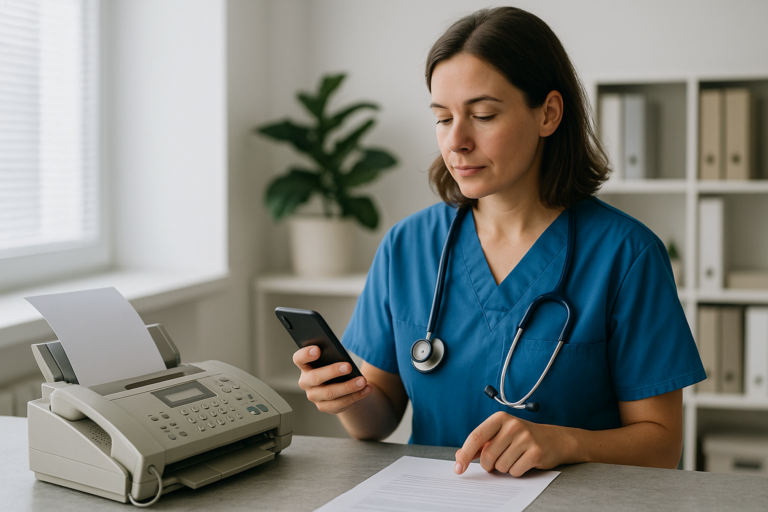Defined as verbal speech or other methods of relaying information in order to get a point across, effective communication is a necessary component in almost any industry. In healthcare and with patient-system interactions, communication is bidirectional. As described in the Harvard Public Health Review, this means the following:
- Patients need to be able to convey information about their health condition(s) to healthcare workers.
- Healthcare workers must be able to adequately comprehend and interpret the information in order to treat health complaints appropriately.
- In order to decrease the risk of health conditions from recurring, healthcare workers must convey adequate information to patients to help them take preventative measures in order to maintain their health.
Research has identified multiple ways communication can lead to better health outcomes, such as reducing medication errors, reducing hospital readmissions and increasing patient satisfaction with their provider visits. Evidence from research also indicates there are strong positive relationships between a healthcare team member’s communication skills and a patient’s capacity to follow through with medical recommendations, self-manage a chronic medical condition and adopt preventive health behaviors. Additional advantages of effective communication in healthcare are:
- Improved quality of care
- Enhanced patient experience
- Reduced cost of care
- Improved patient satisfaction scores
- Decreased stress and burnout for clinicians
- Reduced complaints and readmissions
- Improved staff teamwork and collaboration
Achieving effective communication might sound extremely simple, but there are a myriad of barriers to it, including time constraints, patient pain and fatigue, information overload, use of complex medical jargon, environmental issues such as noise and privacy and patient embarrassment and anxiety. Plus, if either the physician or other clinician and the patient don’t understand the purpose of the information conveyed, effective communication is impossible.
A lack of effective communication can cause serious problems for both clinicians and payments. A past study estimated that communication failures in United States hospitals and medical practices were responsible at least in part for 30 percent of all malpractice claims, resulting in 1,744 deaths and $1.7 billion in malpractice costs over five years. A similar study, this one conducted by the Joint Commission, found that 80 percent of serious medical errors were the result of miscommunication between caregivers during patient handovers.
Top Tips for Designing a Provider-specific Communications System
Solutions for improved provider-patient communication don’t have to be complex. For example, designing a HIPAA-compliant phone system that meets a provider’s business needs while allowing patients to easily reach them, even beyond office hours, is a cost-effective method for improving the quality of care. Consider our following ten tips on how to build and integrate a phone system for your healthcare organization:
- Use your team wisely: Make sure the patient calling in by phone can get a live person easily.
It’s a basic tenet of healthcare communication: patients who call their provider(s) typically want to talk to someone. It’s not critical you answer every call with a live voice on the first ring, but it’s imperative that a patient can access a friendly and professional provider staff member easily.
There are two main options for quickly getting patients through to speak live with someone in your office. You can either answer all calls live without having the caller go through a menu or offer a well-designed menu with easy access. There are pros and cons with each, but preparation and planning enable either choice to be a viable option.
The right decision is whatever is right for your office/practice, works with the resources you already have and meets the amount of call traffic you expect. If you choose to answer all calls live, the trick is to make sure all staff understands the importance of this responsibility and are motivated to answer calls promptly using practice- professional phone etiquette.
When utilizing a menu, create it in a way that doesn’t only make it easier on your staff but also optimizes the callers’ experience. The first rule is to make it easy for patients to speak live to one of your staff members from one of the first few options on your menu. This way, patients don’t feel like they are being sidelined to save the office a few seconds of time.
Using a menu also allows you to control the quality of voice recordings to make patients feel welcome. At RingRx, we frequently reserve the very-common “press-zero” option, since many people will try it anyway. Another option is to use “1” to access the front desk.
- Give options: Use a menu, but do it right.
For most physician offices, the decision to use a menu is mainly a function of how busy the office is. Providing callers with one is an effective way to help improve the efficiency of your office. Consider the following options when creating your office/practice call menu:
- Have it professionally recorded.
- Keep it focused – avoid using all nine options unless necessary.
- Use dial by directory but only on a sub-menu. Reserve the main menu for the five most important general options.
- Provide a single option for patients to get your fax number, office hours, address, directions, a general email address and names of physicians.
- Give an option at the end to repeat the menu, or repeat it automatically.
- Change up your menus for office hours and after hours. Make sure patients can get the resources they likely will want after hours, including an option to reach the on-call provider.
- Offer patients a convenient way to cancel or reschedule an appointment or request medical records.
- Most importantly, give an option for callers to get a live person quickly (see tip #1).
- Be original: Customize Your music on hold.
Bob Marley once said, “One good thing about music, when it hits you, you feel no pain.” Consider this quote from the perspective of your patients who are trying to get relief from pain when they call you.
It seems like only two or three music on hold (MOH) tracks play in about 90 percent of all offices in the country. That’s not true, but many of these tracks should probably be restricted to being played in elevators of department stores.
The main rule we here at RingRx have with music on hold is that it can’t offend anyone. Therefore, we approach this topic a bit differently than most companies. We like to make sure the music on hold is not only pleasant but also has the right personality for your office.
Spend a few minutes pondering what your office personality is, and see what kind of music pops into your head. Then, find a few songs you like that match that personality; consider picking two or three tracks and cut out the best selections and blend them with the other tracks. It’s a good idea to adjust the audio volume by “fading” between songs to avoid any odd-sounding changes.
One solid way to set yourself apart is to have a message recorded that plays over the background music that was picked for your office. If you choose, hire a voice talent to add some messaging – just make sure the music feels right in the background.
- Use time wisely: Consider a message on hold.
Any message on hold you utilize should be professional and provide only information the patient wants to hear. If you choose to have some marketing messages as part of your message on hold, mix them with something more benign or something interesting about your office. Avoid anything too heavy-handed to keep the patient experience fresh and maintain the patient focus.
- Remember that consistency is comforting: Use an approved answer phrase.
Train staff to use your selected phrase consistently, and remind them of the importance of answering professionally and politely. A good way to underscore the importance of answering the phone properly is to point out that the call your staff member answers might be the only call that patient makes that day, especially if he or she is elderly. While your staff will undoubtedly answer dozens of calls in a day, the experience the patient has is substantially affected by the way the front desk staff sounds on the phone.
- Enable easy call access: Make after-hours messages possible
It is becoming much more accepted and preferred in healthcare communication to leave a confidential message than to talk with someone at an answering service. Plus, your answering service staff should be reserved for urgent calls. This will help keep your answering service bill low, especially because most services charge by the amount of time they are on the phone or by the number of calls they take.
- Evaluate your key communication tool: Use high-quality desk phones.
There are dozens of phone manufacturers on the market offering products with varying quality and features. Your front desk staff is typically on the phone throughout the day, so the possible additional cost of purchasing the best phone with the most appropriate features is minimal when factored in over the life of the phone. Most service providers offer good financing options for new phones, or, if you want to avoid a large capital outlay, consider a lease option on one.
- Script it: Have a standard format and script layout for staff greetings on voicemail boxes.
Make these greetings cheerful yet professional, and print the script so staff have it readily available if they need to change their own greeting. After a staff records a new greeting, have it reviewed by a manager to make sure it’s consistent with your other office phone greetings. Phrases associated with common courtesy go a long way in solidifying your reputation as a caring office with good patient service.
- Move ahead of standard: Implement advanced healthcare communication features.
Features such as Call Park Orbit, Direct Call Pickup, Ring Groups and Intercoms can help improve the patient experience by reducing the time it takes for them to be served. They’re also great for staff efficiency, making them a win-win when implemented properly and used appropriately. Training on these is minimal, but the contribution to the patient experience is high.
- Conduct check-ins: Call your phone once in a while.
Try these healthcare communication tips, and call your office/practice to hear how it sounds and flows. Encourage management and/or other staff members to do the same. Make changes accordingly, and don’t be afraid to try new things to see how your patients respond.
Learn how RingRx can collaborate with you to design a communications system that fits your needs and optimizes your practice’s workflow – sign up now for a free 14-day trial!





